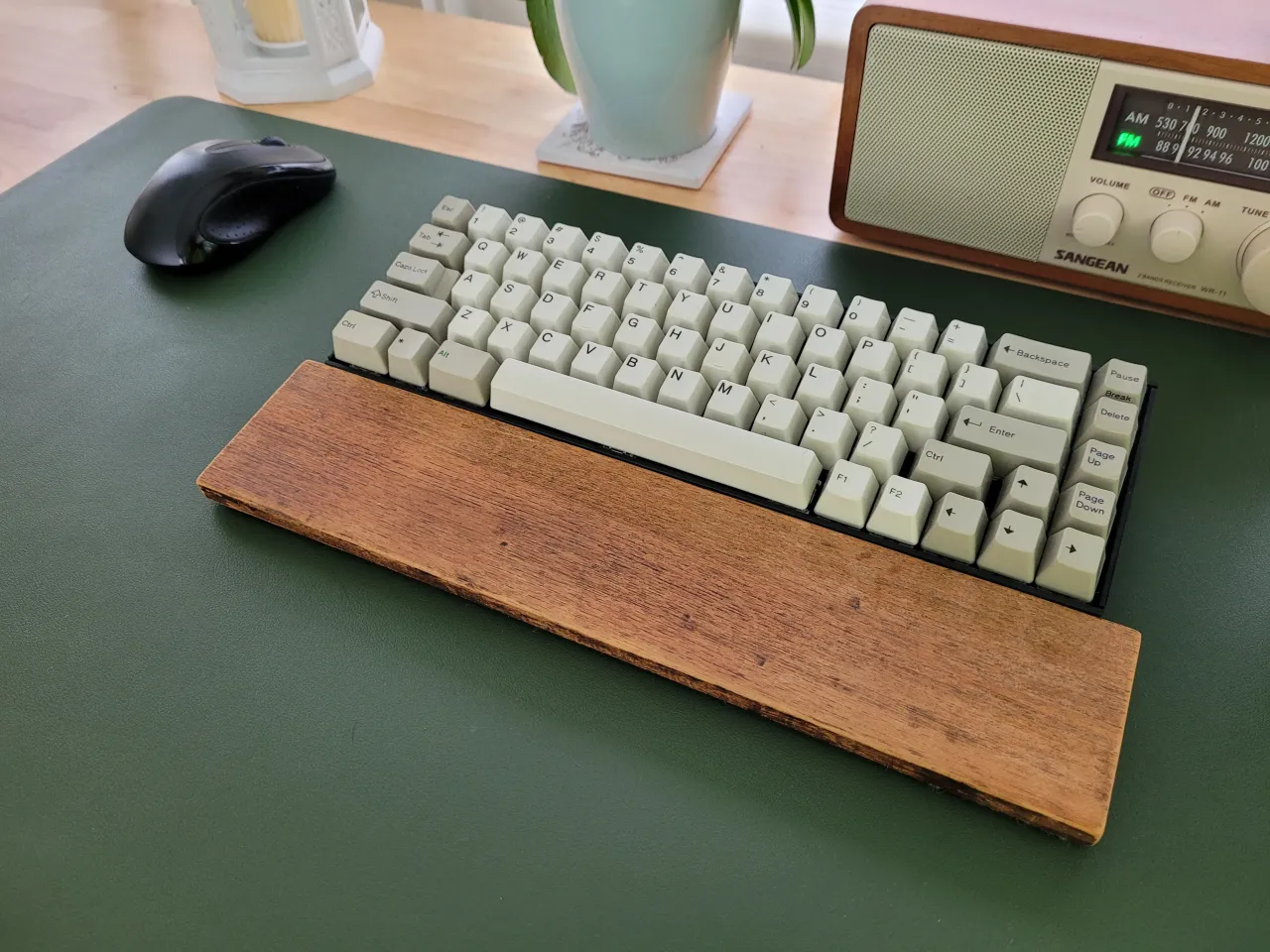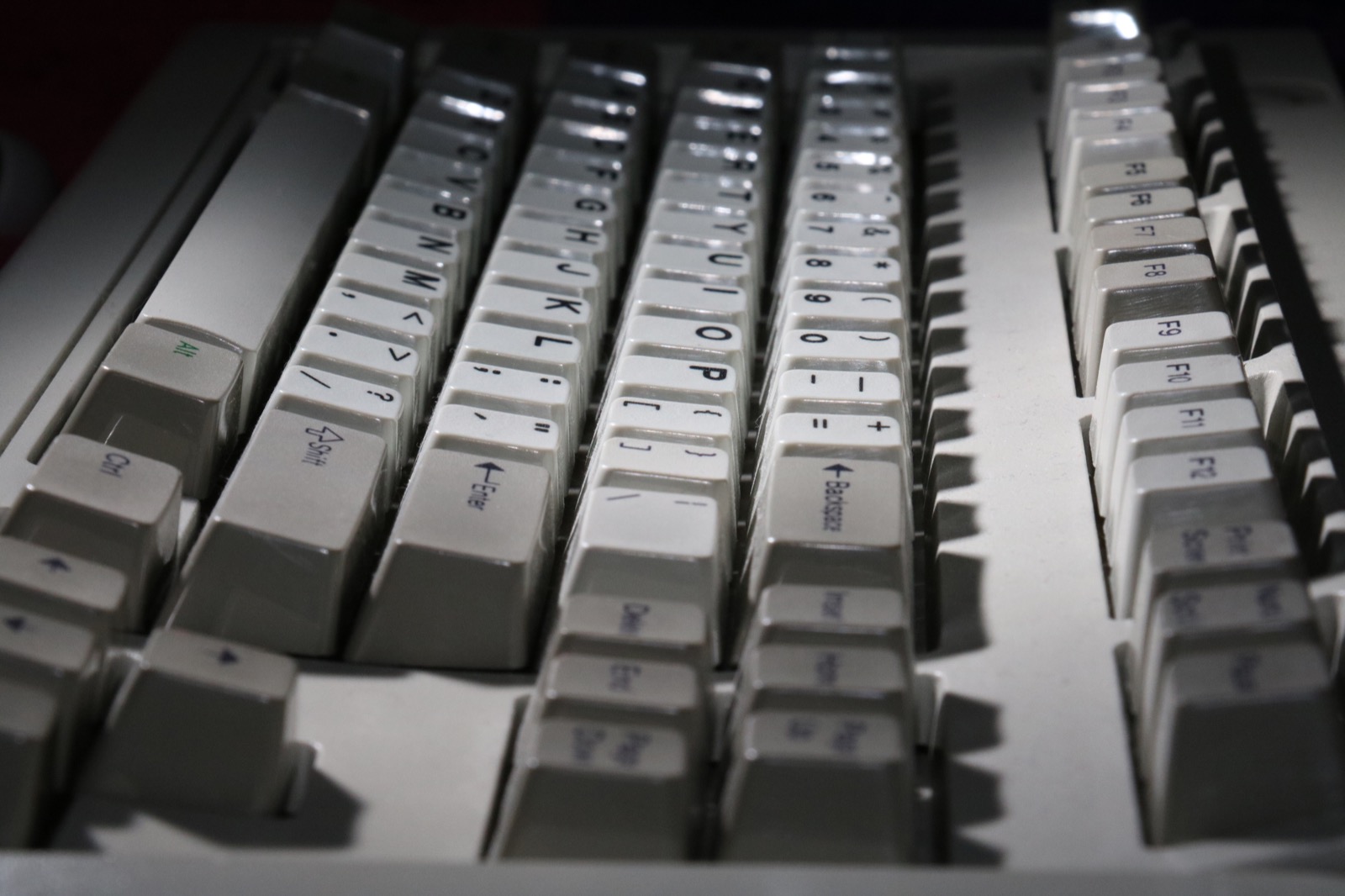I'd like to use some IBM Model M keycaps on some Cherry MX style switches. I found an .stl file for it here: https://www.printables.com/model/263508 ... caps/files
Has anyone here used these? And can someone recommend a place I can send the file to, to have some printed?
printing MX stems for IBM keycaps
- Muirium
- µ
- Location: Edinburgh, Scotland
- Main keyboard: HHKB Type-S with Bluetooth by Hasu
- Main mouse: Apple Magic Mouse
- Favorite switch: Gotta Try 'Em All
- DT Pro Member: µ
As the linked page’s photo shows, they’ll be very high and have a lot of open space between them:

IBM caps are meant for a curved backplate. When put on any other kind of keyboard, they don’t look right. They’re peeled back with gaps opened up between…


IBM caps are meant for a curved backplate. When put on any other kind of keyboard, they don’t look right. They’re peeled back with gaps opened up between…

-
AndyJ
- Location: USA
- Main keyboard: i-Rocks compact
- Main mouse: Logitech Trackman
- Favorite switch: IBM buckling spring
I have a 1u gap on each side of the bottom row, if I trim the little plastic tabs between the spacebar (or M alt keys) and the outer keys. I picked up a couple of Cherry laptop switches to see what the space situation looks like.
There appears to be sufficient room for the low-profile laptop switches, an IBM keycap, and a circuit board to mount the switch to.
Naturally, the IBM controller would be clueless about the extra switches, but if I use a Teensy (or an embedded Pi Zero) I can send the scancodes to the computer via USB.
Linux doesn't care about extra "human interface devices"; I leave an old 104-key keyboard plugged in and leaning against the side of my desk in case I need to access F11 or F12 during boot, and to use in VirtualBox for VMs where I haven't remapped the keys. The embedded controller would just look like a third keyboard, with only two keys.
To be absolutely honest I don't know what I would use the keys for, but it has always bugged me to see the empty spaces there.
There appears to be sufficient room for the low-profile laptop switches, an IBM keycap, and a circuit board to mount the switch to.
Naturally, the IBM controller would be clueless about the extra switches, but if I use a Teensy (or an embedded Pi Zero) I can send the scancodes to the computer via USB.
Linux doesn't care about extra "human interface devices"; I leave an old 104-key keyboard plugged in and leaning against the side of my desk in case I need to access F11 or F12 during boot, and to use in VirtualBox for VMs where I haven't remapped the keys. The embedded controller would just look like a third keyboard, with only two keys.
To be absolutely honest I don't know what I would use the keys for, but it has always bugged me to see the empty spaces there.
-
Findecanor
- Location: Stockholm, Sweden
- DT Pro Member: 0011
I'd think it would be interesting for something with curved key-wells, such as a variant of Dactyl.
I think I've also seen a row-staggered prototype keyboard with MX switches on a curved backplane made up of metal plate strips (but I couldn't find it right now).
I think I've also seen a row-staggered prototype keyboard with MX switches on a curved backplane made up of metal plate strips (but I couldn't find it right now).
-
AndyJ
- Location: USA
- Main keyboard: i-Rocks compact
- Main mouse: Logitech Trackman
- Favorite switch: IBM buckling spring
All the IBM keys and keycaps are perpendicular to the barrels. The "curve" parts are the two plates and the flexible capacitance membrane.
An added-on switch would be in the same orientation as the original IBM switches.
An added-on switch would be in the same orientation as the original IBM switches.
- Muirium
- µ
- Location: Edinburgh, Scotland
- Main keyboard: HHKB Type-S with Bluetooth by Hasu
- Main mouse: Apple Magic Mouse
- Favorite switch: Gotta Try 'Em All
- DT Pro Member: µ
The “curved part” curves everything. 

All those caps are the same profile. They’re slanted by the barrels, which are mounted on the curve.
All those caps are the same profile. They’re slanted by the barrels, which are mounted on the curve.